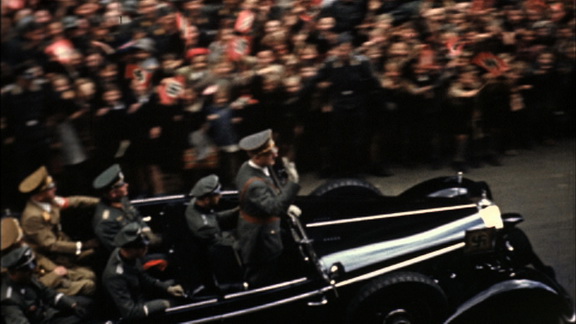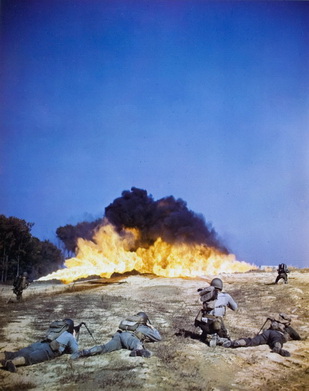
Seeing the adulation of the populace for Adolf Hitler was chilling in this picture from one of the actual footages of that era.
Written by
Jude Thaddeus L. Bautista
A trembling Asian child is covered in ash, her face and whole body is shaking uncontrollably. Everything around her is rubble and smoke. A G.I. lets her drink from a canteen. It only lasts a few seconds but is so moving because what you’re looking at isn’t a simulation or some huge big budget Hollywood film. It’s the real thing alive and in color, the implications are incredible. It could possibly be from the Hiroshima bombing or one of the many Asian cities destroyed during the Second World War.
This is one miniseries where audiences have to heed the clear warning: VIEWER DISCRETION IS ADVISED. The suffering, death, destruction and ravages of war are difficult to digest. Everything that you will see in History channels’ “World War II: Lost films” is real. The series will premiere on May 10 with 2 back to back episodes each day until May 14th. And will be shown every Tuesday and Wed starting from May 18.
Producers scoured the world for 2 years searching for films from World War II and collated them. They narrowed down their search to 16 mm color and still ended up with 3,000 hours worth of raw footage. None of the actual films were colorized. They are intact from archives of different countries and nearly every continent on earth. Some are better preserved than others. But all of them are digitized and each frame of 16 mm has more than enough data for the HD format.
Louis Boswell, General Manager of AAA Networks said, “Apart from the footages we researched diaries, letters from soldiers and a lot of different people who went through the war. The main goal of the series is that it should serve as a lesson that nobody should have to go through war again.”
More than a random collection of visuals, researchers also looked for a wide range of real live subjects who were interviewed and shared their experiences during the war. This gave the documentary a very personal and touching side to it. For us Filipinos history only becomes real when it is personal, when someone we know went through it. Dr. Ricky Ricardo Jose a historian, who has studied in both the U.S and Japan, said that having that direct link to the past is important. “Look for old people who lived through that time and ask them what it was like. In this way history isn’t something that is abstract and alien. It becomes alive through the eyes of a loved one who was there.” On May 25 an episode on Philippine Resistance will be aired also on History.
In Episode 1 of “Lost films”, Jack Werner is a Jewish Austrian who had ambitions of joining Hollywood as an actor. He escaped the cruelty of the Nazis just in time to get to the U.S. and volunteer as a soldier. From the actual present day interview, his words, his voice dissolved into the voice of Justin Bartha. As the visuals become the old World War II footage so does the voice become younger and takes us to that era. Bartha is a competent actor who is famous for his role as the groom to be in “The Hangover”. Although the voice is taken over by Bartha, the words are still based on the interview and accounts of the real Jack Werner. Special attention was given to the visuals interaction with how viewers will hear the sounds and voices. It is quite effective.
Shelby Westbrook is one of the early African American fighter pilots. His younger voice and words are performed by LL Cool J who has evolved from a rapper to an actor with roles from “SWAT” to “Charlie’s Angels”. No less than Gary Sinise of CSI fame and lead roles in “Apollo 11” and “Forrest Gump”, is the main narrator. These are only a few of the many famous names who lent their voices to the project. Boswell admitted that having big names such as these attract audiences. Perhaps it is also their skills as actors that add to the richness and realism of the documentary.
The power of real images, real interviews in showing and interpreting history as we know it touches not only the mind but affects emotions very easily. Seeing the adulation that the Germans showered on the Furher, Adolf Hitler was chilling. Seeing his private moments shaking the hand of the child in his Berghof retreat didn’t humanize him, knowing and seeing what transpired next. Just as we witness the depths of human cruelty we are also moved by the triumphs of mankind’s will to overcome evil. The series includes the inspiring clarity of Winston Churchill’s speech: “ …We shall fight on the seas and oceans, we shall fight with growing confidence and growing strength in the air, we shall defend our Island, whatever the cost may be, we shall fight on the beaches, we shall fight on the landing grounds, … we shall never surrender..”

